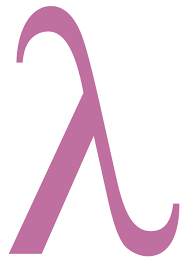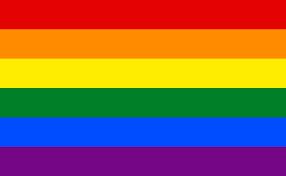Important LGBT Symbols You Should Know About Today

While you may be acquainted with the double Venus and double Mars designs, they are just the tip of the iceberg regarding LGBTQ+ symbols. Several symbols emerged as a hidden way for wearers to signify their sexual orientation, while others were more freely interpreted. While some of these symbols date back generations, others have been around for less than two decades. Whatever their origins, these LGBT symbols and flags represent the LGBTQ+ community’s expression of pride.
Most of these symbols were created for the same reason: a desire for a good, celebratory symbol for society, whether the LGBTQ+ group altogether or a more precise subset. The following are some of the LGBT symbols and flags.
Double Venus

The double Venus symbolizes the lesbian lifestyle by doubling and interlocking the Venus sign, representing the feminine sex in various scientific areas. Lesbians utilize two overlaying symbols to denote female loving=female. While the Venus sign originated between the second and eighth centuries AD, the double Venus gained popularity in the 1970s.
Double Mars

As with the double Venus sign, the double Mars symbol duplicates the Mars symbol, which is used to symbolize the masculine sex in certain scientific disciplines, to create a symbol for gay men. The double Venus and double Mars emblems gained popularity throughout the 1970s. Gay guys utilize two overlapping mars symbols to denote male-loving males.
Lambda

The Gay Activist Alliance adopted the Greek letter lambda as its emblem in 1970 because a lambda-emblazoned banner was flown by a battalion of Greek soldiers who were escorted into combat by their younger male companions and were recognized for their bravery and readiness to stand and fight. Since 1970, several LGBT groups have used lambda as their emblem.
Double Triangles

The double triangles (bisexual triangles) depict a pink triangle overlaying with a blue triangle to form a purple triangle. Some say the pink triangle represents an interest in females, the blue triangle signifies interest in males, and the purple triangle denotes attraction to non-binary people. In contrast, others say pink stands for homosexuality, blue stands for heterosexuality, and purple signifies bisexuality.
Labrys

A labrys, a sort of double-headed ax which overlaid on an upside black triangle and set on a violet backdrop. The labrys is a symbol of matriarchal dominance in ancient culture. The Nazis used the triangle as a sign for “anti-social” organizations, which included lesbians. The lesbian community in the 1970s embraced the double ax to symbolize the power and feminism of lesbians.
LGBT Pride Flag

Gilbert Baker, a San Francisco artist, developed the LGBT pride flag. Initially, the flag had eight stripes, but colors were reduced to accommodate fabric availability, resulting in the present and most known pattern. Each of the six colors symbolizes something; red symbolizes life, Orange symbolizes healing, yellow symbolizes sunshine, green symbolizes nature, blue symbolizes peace, and purple symbolizes spirit.
Transgender Pride Flag

According to designer Monica Helms, light blue is the customary color for males, pink is for females, and white is for transitioning, those who identify as gender-neutral or non-binary, and intersex. The flag is designed so that it will still be right regardless of which way you fly it.
Asexual Pride Flag

In August 2010, the Asexual pride flag was designed to create awareness about asexuality. As with the other pride flags, each colored stripe signifies something different: black signifies asexuality, grey signifies grey-asexuality (a state in between asexuality and sexuality), and demisexuality, white signifies sexuality, and purple signifies community.
Pansexual Flag

From mid-2010, the pansexual pride flag has been spotted on a variety of social media sites. Pink, yellow, and blue comprise the pansexual pride flag. The pink band represents females, the blue band represents males, and the yellow stripe in the center represents individuals who identify as transgender, genderqueer, or third gender.
Bisexual Flag

The peak of the flag features a large magenta stripe, the bottom features a broad blue stripe, and the center features a smaller deep lavender stripe. The magenta color denotes sexual interest in only one sex (gay and lesbian). The blue indicates sexual interest in the opposing sex (straight), and the lavender reflects the sexual interest in both sexes due to the overlap.
Check out the best LGBT dating sites on lesbiandatingsites.reviews. Our compilation help you to find the most suitable website for LGBT dating.
